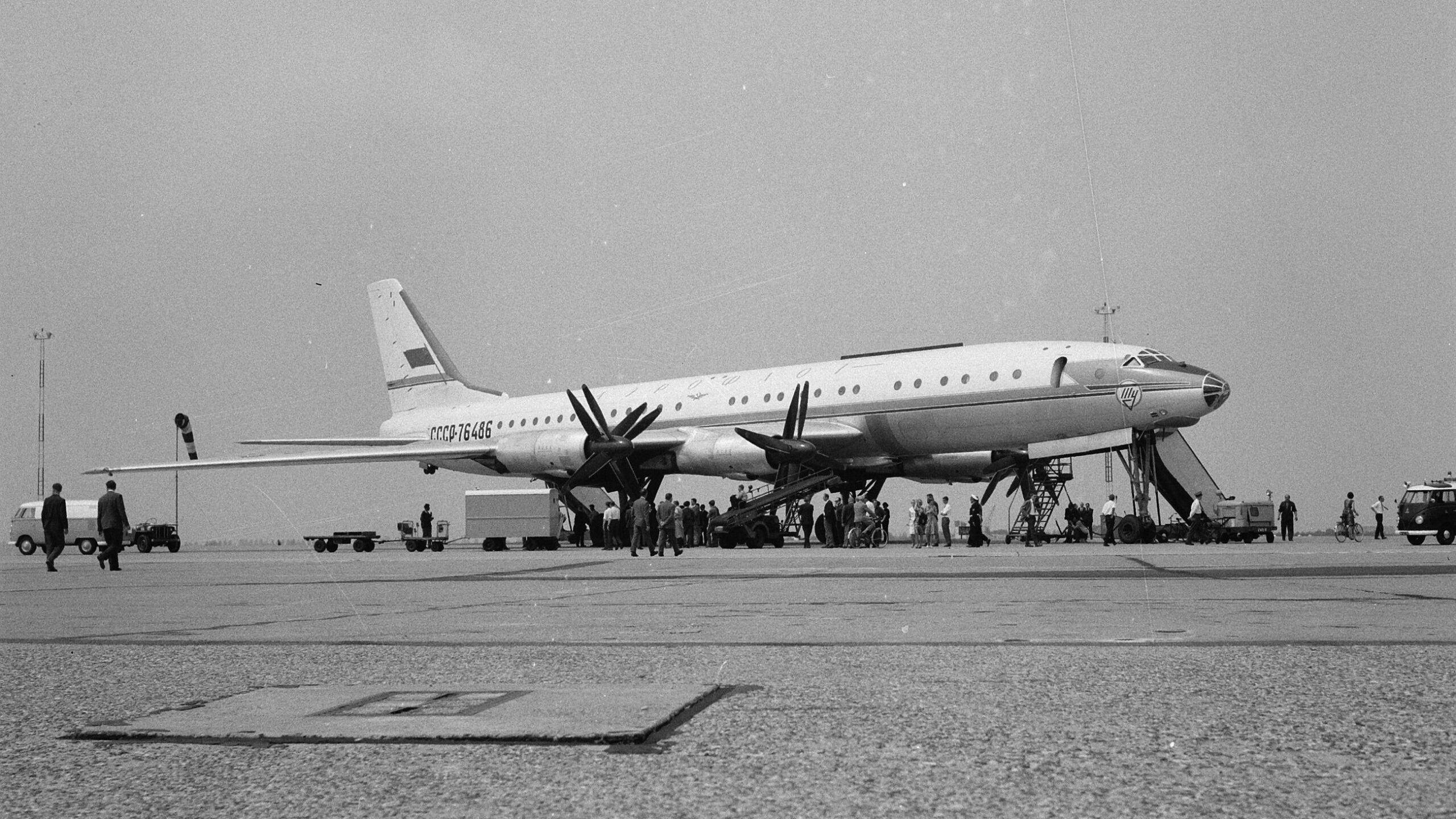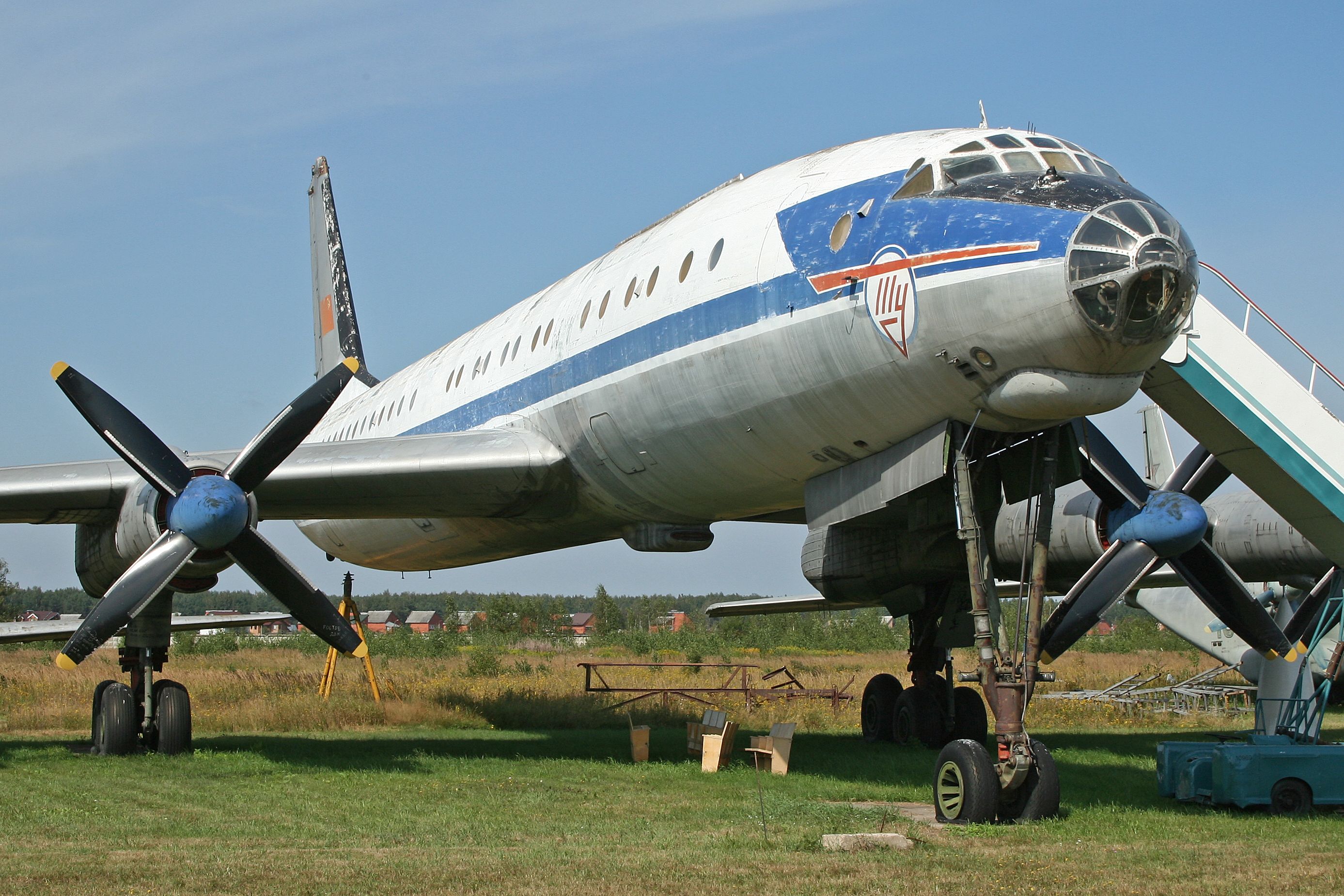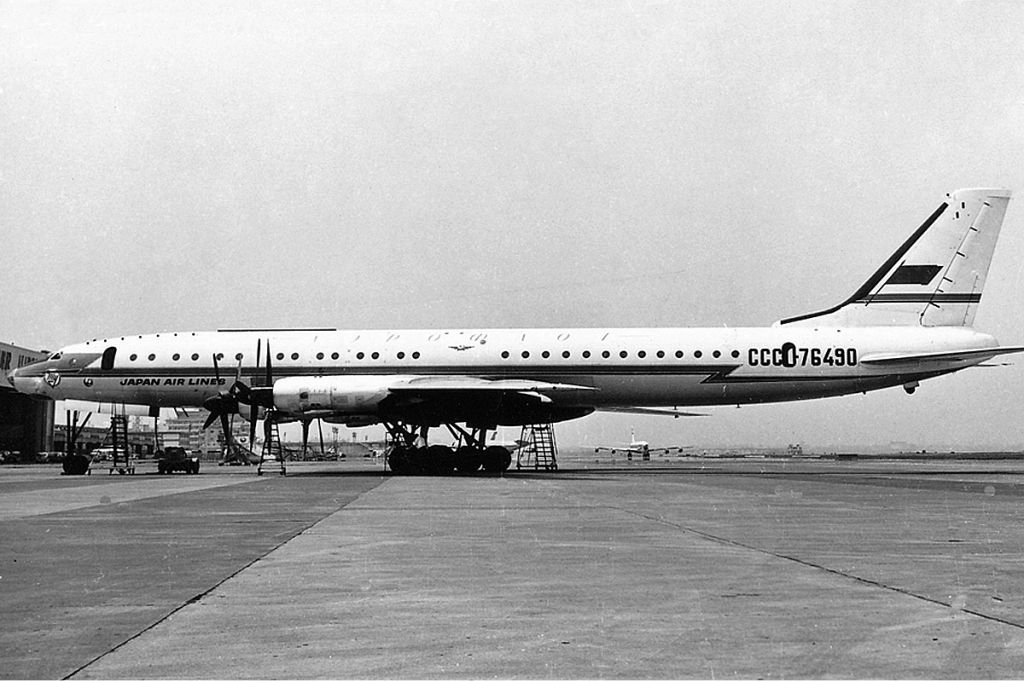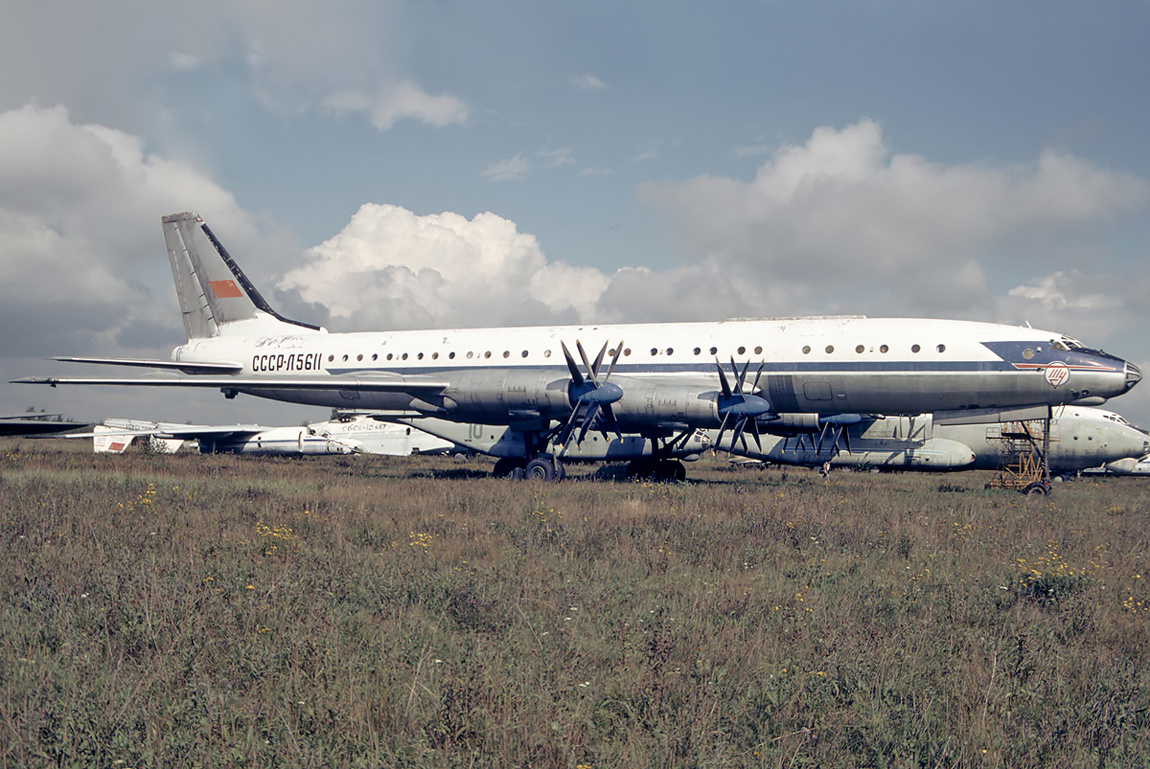Summary
- Tupolev’s Tu-114 was a fast, long-range turboprop plane based on the Tu-95 bomber, boasting a max speed of 540 mph.
- The Tu-114 entered service in 1961 with Aeroflot, offering long-range international flights.
- The Tu-114 was praised for its fuel efficiency and safety.
The Tupolev-Tu-114 Rossiya was a long-range turboprop aircraft designed and developed by Tupolev Design Bureau in the Soviet Union. The aircraft performed its first flight in November 1957 and entered commercial service in April 1961.
When it entered service, it was the largest and fastest passenger aircraft, with a maximum speed of Mach 0.78 (470 knots, 540 mph, 870 km/h) at 26,000 ft (8,000 m). The aircraft featured a tremendous range of 6,800 miles (10,900 km). Since the 1960s, the aircraft held the title of the world’s fastest turboprop airliner.
Based on a bomber
Design characteristics
- Passenger capacity: Up to 220
- Length: 177 ft 6 in (54.1 m)
- Width: 13 ft 9 in (4.2 m)
- Height: 50 ft 8 in (15.44 m)
- Wingspan: 167 ft 8 in (51.1 m)
- Max takeoff weight: 376,990 lb (171,000 kg)
- Fuel capacity: 130,000 lb (60,000 kg)
- Powerplant: 4x Kuznetsov NK-12MV turboprop engines
- Power per engine: 14,795 horsepower (11,033 kW)
The Tupolev Tu-114 was a product of the 1950s, a time when post-war innovation was revolutionizing aviation. This Day In Aviation shows that the design resulted from a directive issued in August 1955 by the Soviet Union’s Council of Ministers and Ministry of Aircraft Production requesting an airliner based on the Tupolev Tu-95.
The Tu-95 was a long-range strategic bomber that first flew in November 1952. Still in use today (the Russian Aerospace Forces plans to keep them in service until at least 2040), the aircraft’s swept wings and powerful contra-rotating propeller engines are conducive to high-speed, long-range flight. As such, the Council wanted Tupolev to harness these advantages to create an aircraft with a range of 8,000 km (4,971 miles). In the end, the company comfortably exceeded this target.
While Tupolev directly transferred certain design elements of the Tu-95, it fitted the Tu-114 with a significantly wider fuselage. This greatly increased the aircraft’s weight, increasing the surface area of its landing flaps. The Tu-114 ultimately made its first flight in November 1957 and entered service in April 1961 on the Moscow to Khabarovsk route. While still in its testing phase in 1959, the Tu-114 carried Nikita Khrushchev on his first trip to the US.
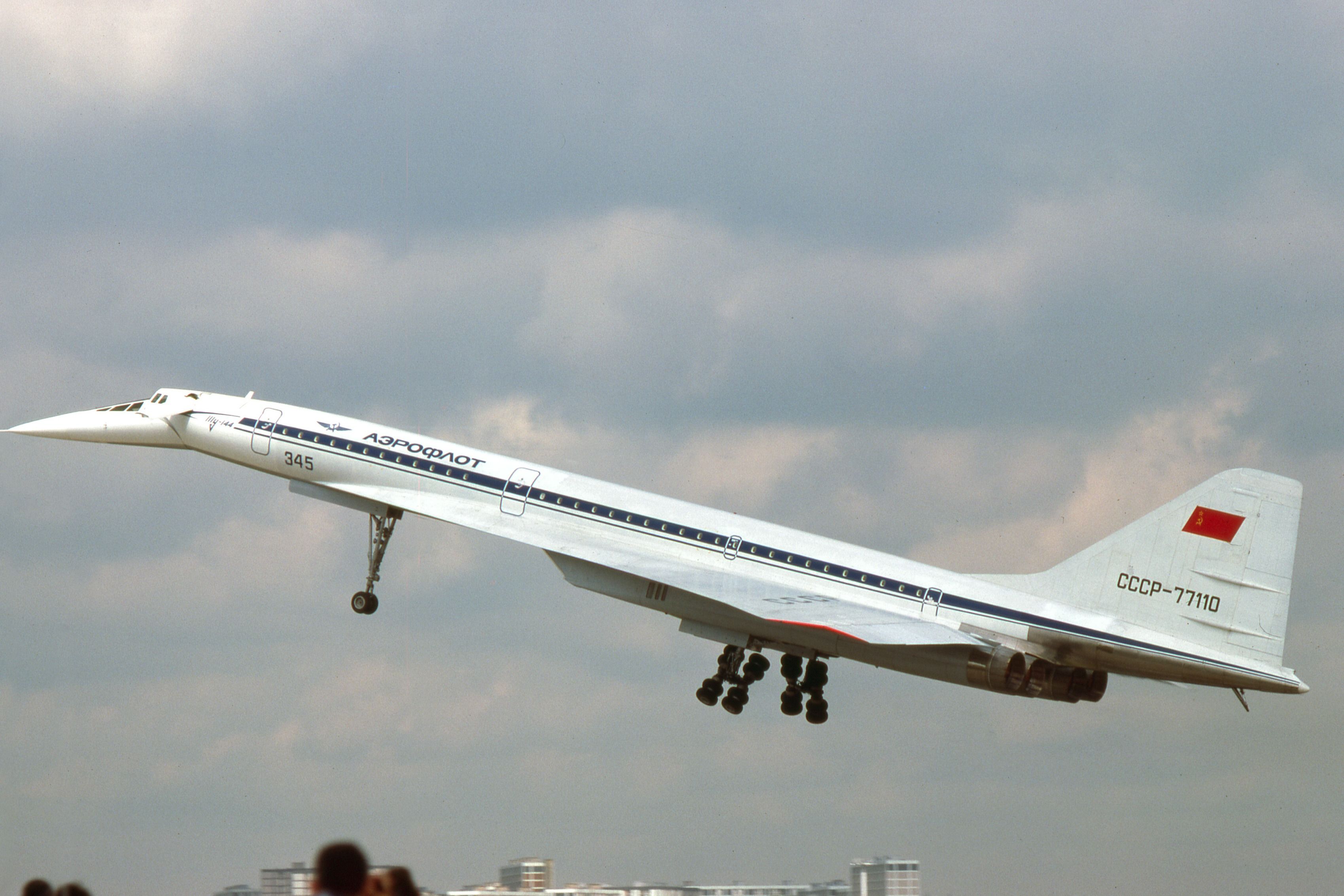
Related
Tupolev Tu-144: The Story Of The Soviet Supersonic Concorde Competitor
The aircraft didn’t enjoy the same levels of success as its Anglo-French counterpart.
A strong performer
- Maximum speed: 470 knots (540 mph, 870 km/h)
- Cruise speed: 420 knots (480 mph, 770 km/h)
- Range: 4,830 NM (5,560 miles, 8,950 km) with max fuel and 15,000 kg (33,000 lb) payload
- Service ceiling: 39,000 ft (12,000 m)
- Take-off run: 8,200 ft (2,500 m)
- Landing run: 4,600 ft (1,400 m)
The Tu-114 was a sizeable aircraft, clocking in at 54.1 m (177 ft) long and 51.1 m (167 ft) wide. Standing at 15.44 m (50 ft) tall, this imposing turboprop aircraft could carry up to 220 passengers, a 5/6-person flight crew, and 10 flight attendants. Its 870 km/h (540 mph) maximum speed was comparable to jet aircraft, and its range peaked at an impressive 8,950 km (5,560 miles).
When the Tu-114 entered service, it initially did so domestically with Aeroflot. However, international destinations were soon added to its repertoire, fully allowing the type to showcase its long-range, high-speed capabilities. The airline deployed the Tu-114 on various intercontinental routes from Moscow Sheremetyevo Airport (SVO) to Havana and Montreal.
The aircraft also flew to Tokyo in partnership with Japan Airlines. Its unique two-class configuration seated 105 passengers. At least one pilot and five of the ten flight attendants were from Japan Airlines, although the service ended in 1969 after just two years.
However, Tupolev only produced 32 examples of the Tu-114, as the advent of the jet age led to its replacement by the Ilyushin Il-62. Nonetheless, it was ranked highly in terms of fuel efficiency. It was revered for its reliability and safety, having only been involved in one fatal accident – Aeroflot Flight 065 from Moscow Sheremetyevo to Brazzaville, with stopovers in Conakry and Accra in 1966. On take-off, the aircraft struck snow piled by the side of the runway, which sent it off course, and in the subsequent fire, around half of those onboard perished.
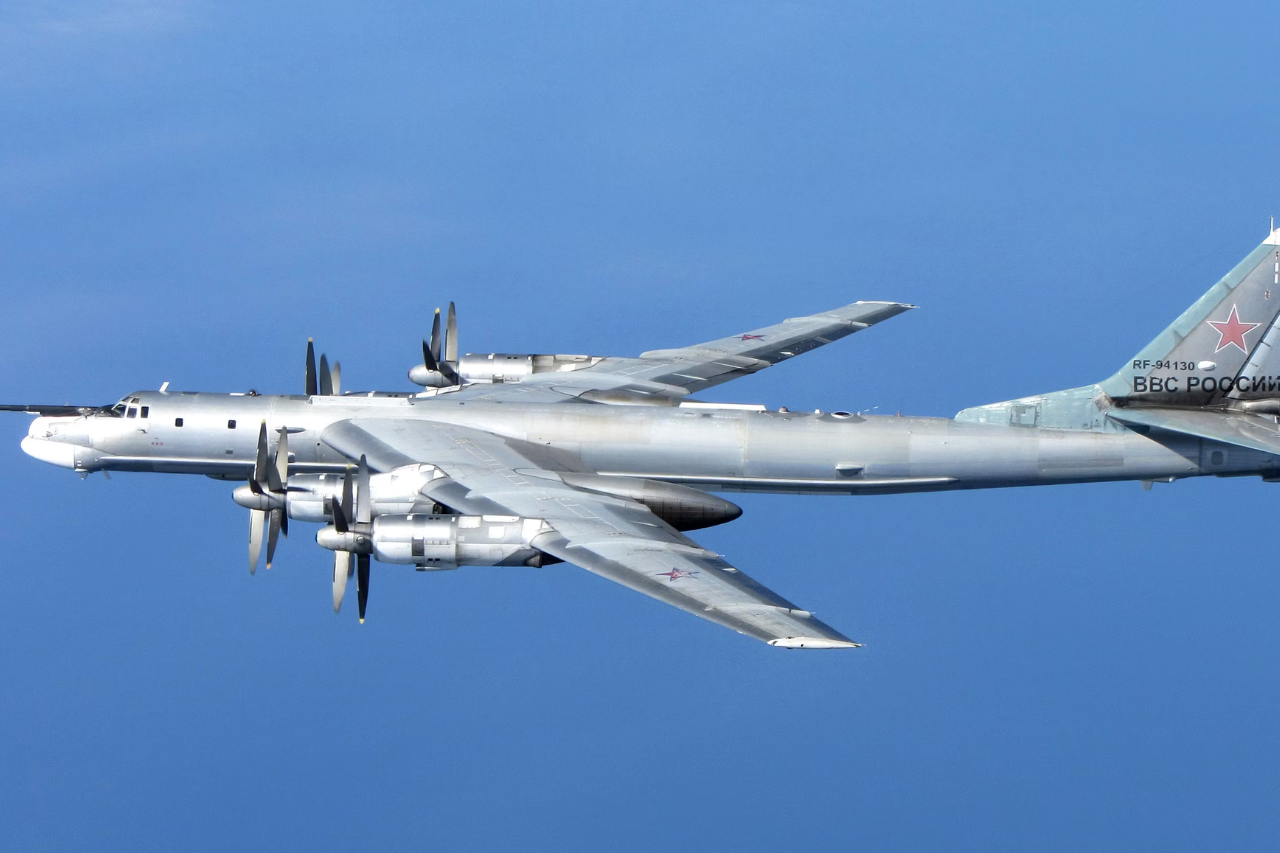
Related
How Loud Is The Tupolev Tu-95 Bomber?
The plane is one of the loudest military aircraft and it has been in service since the 1950s
Short but sweet
Just as the Tu-114 had made history as the world’s fastest turboprop, it was replaced by the similarly ground-breaking Ilyushin Il-62, which, at its launch, was the largest jet aircraft in the world. This contributed to the Tu-114’s decline, and with Aeroflot’s examples having largely reached their 14,000-hour airframe fatigue limit by the mid-1970s, the aircraft retired from commercial service in 1976. By this time, the imposing aircraft had more than six million passengers.
One of Aeroflot’s Tu-114s was later displayed at the Central Air Force Museum in Monino, just outside Moscow. The Soviet military continued to fly the Tu-114 until 1991.
Today, Sheremetyevo Airport remains Aeroflot’s largest hub, although the carrier’s route network has been significantly cut due to sanctions imposed following the conflict in Ukraine. Among the limited number of international destinations still operated by Aeroflot are Hong Kong (HKG), Dubai (DXB), and Beijing (PKX).
What do you think of the Tupolev Tu-114’s short history? Did you fly on one of the aircraft before they were retired in 1976? Share your thoughts and experiences by commenting below.

